Have you ever felt overwhelmed trying to teach your students to be better readers? Our students come to use at a variety of reading levels. You can have students reading 2 years above grade level in the same room as students who are reading 2 years below grade level.
And you get the lucky job of trying to come up with meaningful lessons that will challenge students at all levels. There are so many reading skills and strategies you need to teach and it never feels like there is enough time.
Once I successfully launched reader’s workshop in my classroom, I made it a priority to teach my students reading strategies that would improve their comprehension regardless of their reading level. I started every year teaching my students what I refer to as the 5 Power Strategies. These are (in my opinion) the five most essential reading strategies students have to master in order to become confident life-long readers.
How did I come up with the 5 Power Strategies?
Great question. It’s pretty simple. I started to reflect on what I consistently did as a reader and decided those are the strategies I needed to teach my students first. I think sometimes as teachers we try to over complicate things. We try to come up with cute little acronyms or fancy systems to teach our students.
Effective teaching can be pretty simple at times.
So, if you are looking for simple, yet effective reading strategies to teach your students. I suggest you start with these.
#1 Backup and Reread
This might seem like an easy one, but this is the number one reading strategy we should be teaching our students. How many times have you been reading and realized you missed what was happening on the entire page, or worse, in the entire chapter. Every time I sit down to read, at some point I will end up having to reread part of the text. This is essential to truly understanding what we are reading.
But, so many students don’t know how or why they should be doing this. If you effectively teach students how to backup and reread you will see a huge impact on their reading. They will go from just reading the words to actually understanding what they are reading.
Teaching Tips:
-
Model this skill to students and share examples of when you’ve done this in your own reading life.
-
Explain to students that sometimes this needs to be done if we space out and simple have missed part of what we read, or we might need to go back and reread when there is a section of the text that we don’t understanding.
-
Encourage students to go back and reread or at least skim part of the text every time they come back to a book. If they are reading a chapter book, more than likely they will have to read it over several settings. It’s a good habit to reread bits of it before you pick up where you left off.
-
Let students know that sometimes they will just have to reread just a word or a sentence, maybe a whole paragraph, and sometimes an entire page. There is no exact formula for how far they need to back up and reread, just enough to where they are able to fully understand what is going on.
#2 Visualize
When I’m reading a fictional story one of the first things I do is think about who would be cast as the characters if this book were going to be made into a movie. From the beginning, I start to picture what the characters look like and sound like, and I try to picture all the vivid details of the setting. When we train our students to visualize as they are reading it helps them see and understand the story line.
Teaching Tips:
-
To help students consistently do this, you can start by reading them picture books without showing them any of the pictures. Hold the book so you’re keeping the pictures to yourself and before you reveal the pictures to the students ask them to describe in detail what they think the picture will look like. Then you can show them the picture. Affirm every little detail they included in their description.
-
Encourage students to draw pictures (no matter how basic) as they are independently reading a story. When they stop to think about what they should draw they will have go back and re-read part of the text to help them create their mental image.
-
Remind students to pay attention to characters actions and emotions, the way the author describes the setting, and highly emotional parts of the story. Ask them what it would look like if they turned this into a movie. This will help them to continuously picture what is happening as they read.
#3 Ask and Answer Questions
Reading is thinking. As I am reading, I am constantly thinking about what will happen next. I wonder how the story will end, and if the main character will ever solve their problem. I’m constantly asking myself questions, and then looking for those questions in the text as I keep reading. We want our students to do the same. We want them to read with curiosity and feel the need to stop and ask questions about any text they are reading.
Teaching Tips:
-
Provide students with a set of question stems that they might ask before, during, and after they read. Some students are used to word calling and aren’t really reading for meaning. Providing students with some question stems is a good way to encourage them to stop and ask questions while they read.
-
Model this strategy while you are reading aloud to your students. Any time you are reading a text to them, pause and share the questions that you have. Tell them that once you ask a question you pay special attention to the text and look for the answer to your question.
-
Share a personal example from your reading life. One thing I frequently do in my personal life is ask questions related to the author’s inspiration for the book. I love to let my students know that I was curious about the author’s life experience and how that contributed to a book I just read. I share the question I asked and then the research I did to find the answer. Sharing personal examples from your reading life takes no time at all, and it might inspire your students to do the same.
#4 Stop and Jot
I am a fan of reading paper books vs. e-books. I love having the option of taking notes in the margin. In fact, most of my books are dog-eared and have ink all over the margins. When I read I take notes. I like to highlight important words or phrases. I like to jot down ah-ha moments. I like to take note of personal connections I make. When I write something down it is more likely to stick with me and I have gotten in the habit of writing something almost every time I read. This is such an easy strategy to teach students and it can really help them improve their comprehension.
Teaching Tips:
-
Make sure students know that their stop-and-jot notes are just for them.
-
Give them permission to write in short-hand or to abbreviate. Not everything they write down has to be in a complete sentence.
-
Give students sticky-note templates so they can easily take notes in the margins of school books they are reading without actually marking up any text.
-
Bring in your own books and let students see what you stop-and-jot.
#5 Talk About It
I love reading and am usually reading more than one book at a time. I have several book clubs or partnerships that I am a part of, and I will frequently touch base with one of the girls in my book club. I love to talk about any book I am reading, even if I haven’t finished it yet. I ask questions. I share my comments and thoughts. I talk about my predictions. I share research I have done on the author. My comprehension and enjoyment are both improved when I can talk about a book with a friend. The same is true for your kids. Kids will be so much more excited about a book if they are able to talk about it with their friends. Books are meant to be shared. Your students will love reading so much more if they can share their reading experience with their classmates.
Teaching Tips:
-
Save 3-5 minutes at the end of your reader’s workshop for students to talk about their books with their classmates. They don’t have to be reading the same book to benefit from talking and listening about books. Students often get inspired to read a certain book or series when they hear their classmates talking about how much they are enjoying a particular book.
-
Build in turn and talk into your read aloud. Having a shared book that everyone is reading is a great way to let students practice talking about books. This is a great time to model what appropriate book talk looks and sounds like.
-
Incorporate buddy reading or book clubs into your reading block. Let students join together and read the same book as a classmate or a group or students. Give them time to talk about it.
So there you have it. There is nothing revolutionary about these five strategies except for the fact that THEY ACTUALLY WORK. I bet when you stop to think about it, you use all of these strategies in your own reading life. Doesn’t it make sense that we teach our students what we naturally do as readers?
Now, there are tons of other great strategies that will help your students become stronger readers, but I would suggest you start with these.
-
They are applicable to all students regardless of reading level.
-
They work for all types of books.
-
They can be used for any genre.
-
They aren’t too complex to teach – talk about a huge win!
Download your free poster!
How to Read Big Words Strategy
Teach your students this five-step process for reading big multi-syllabic words. Students will feel much more confident knowing what steps to take when they encounter a tricky word in a text they are reading.
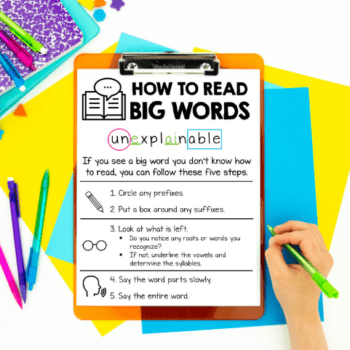
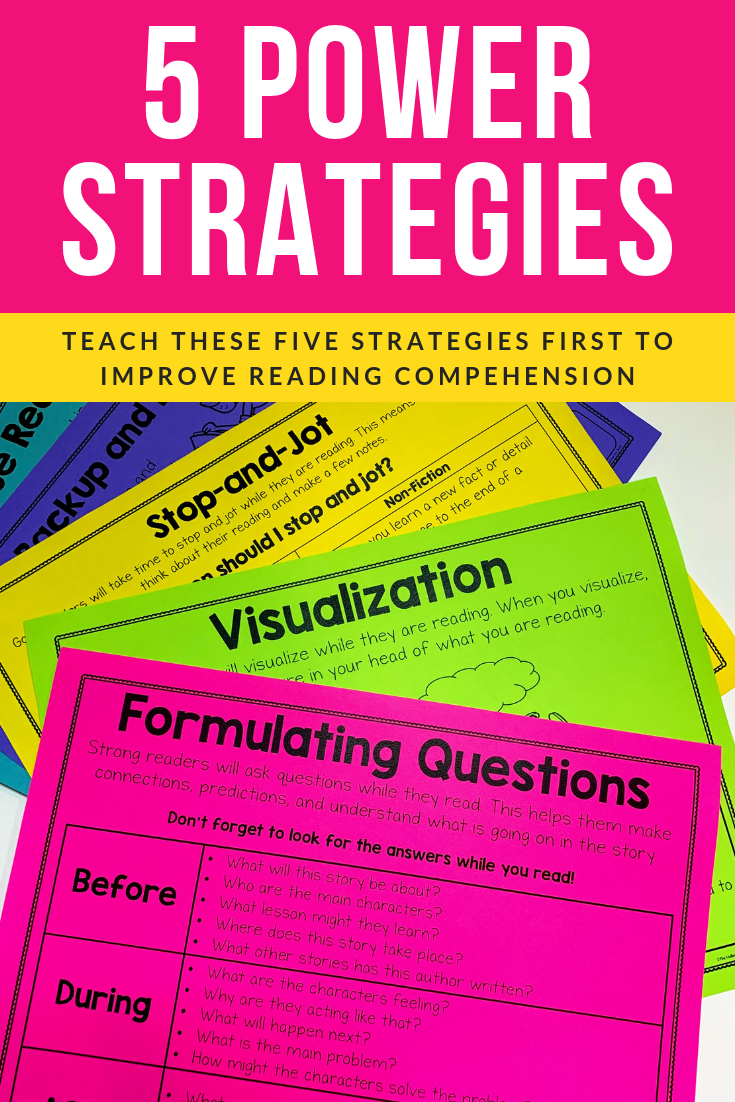



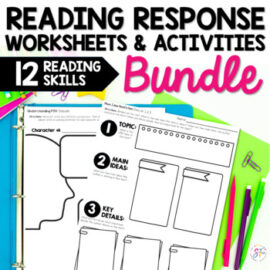
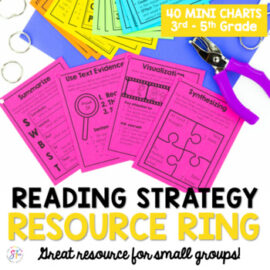
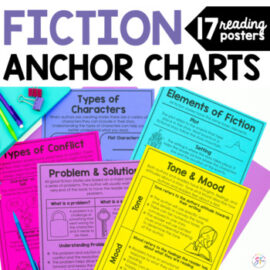
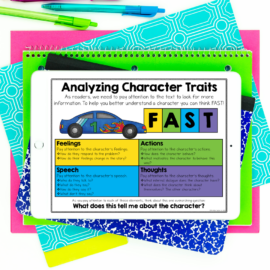
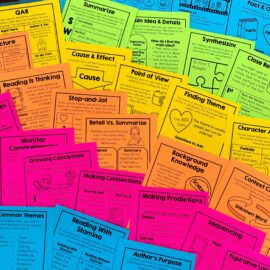
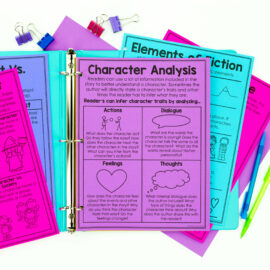


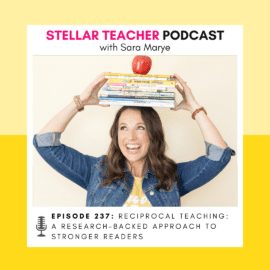


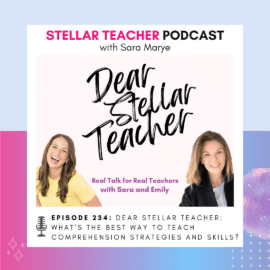



Leave a Comment
You must be logged in to post a comment.